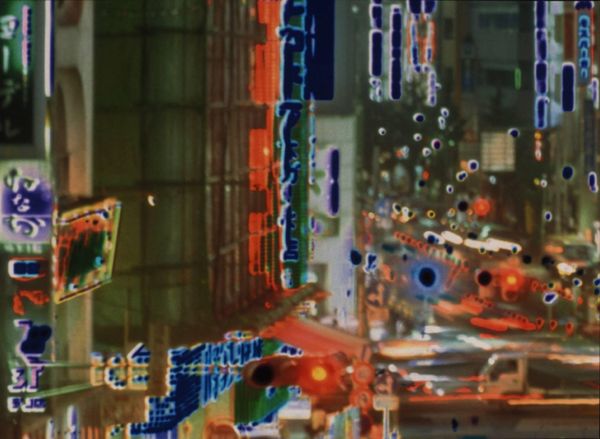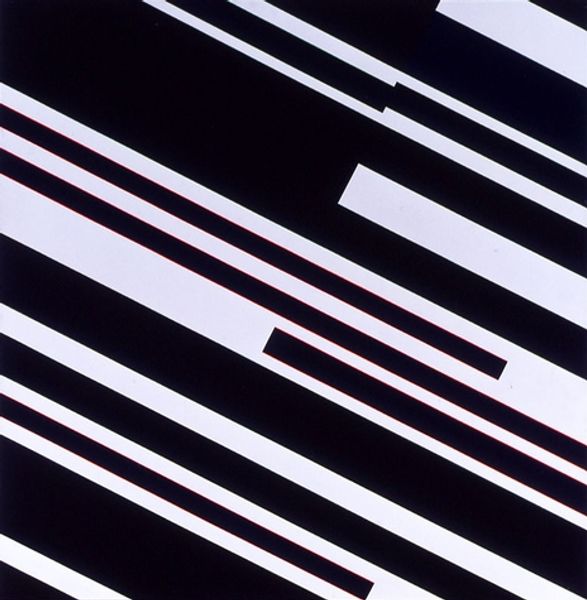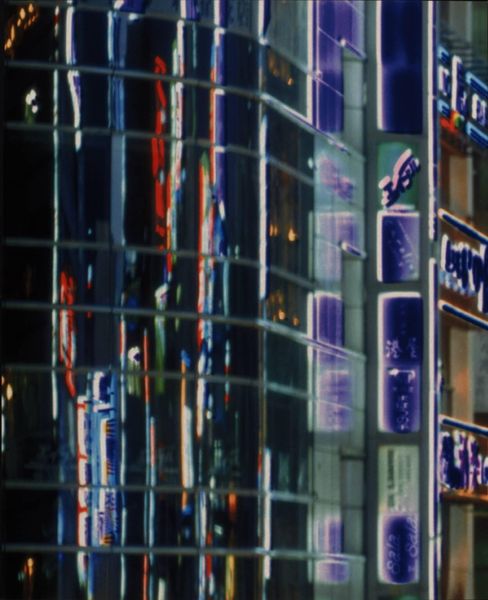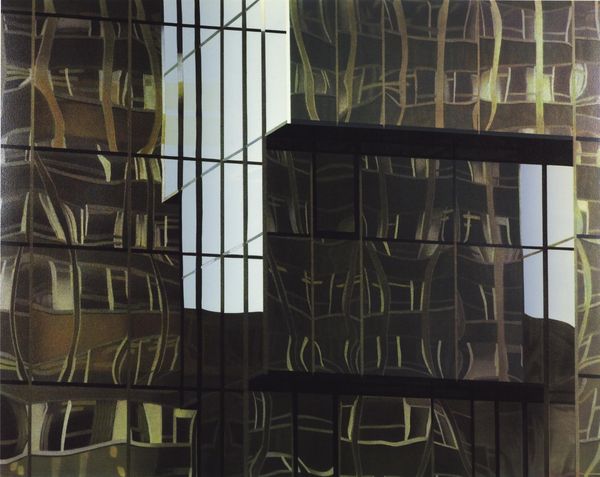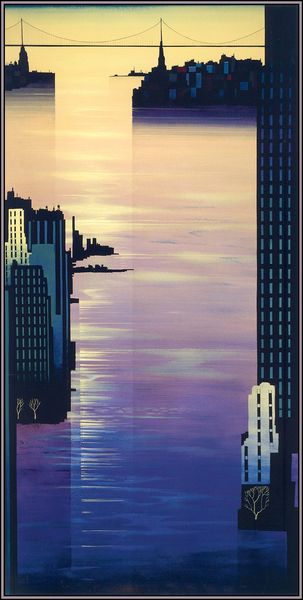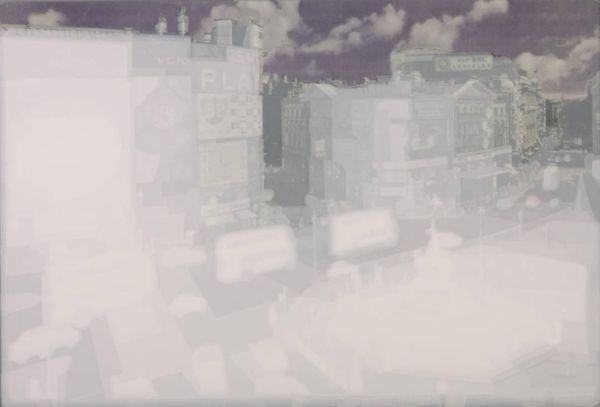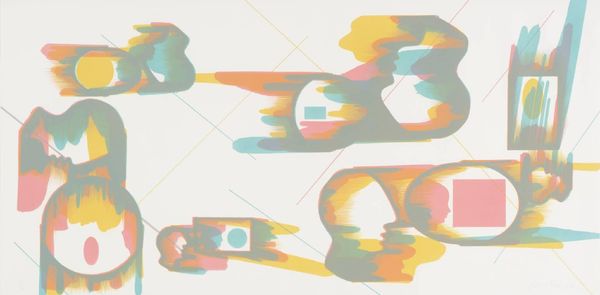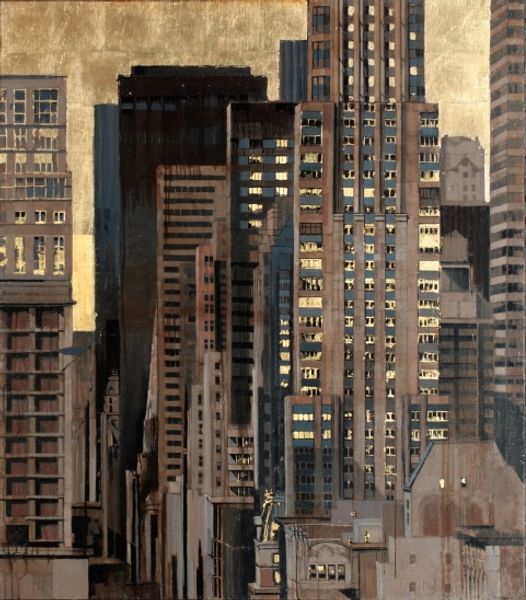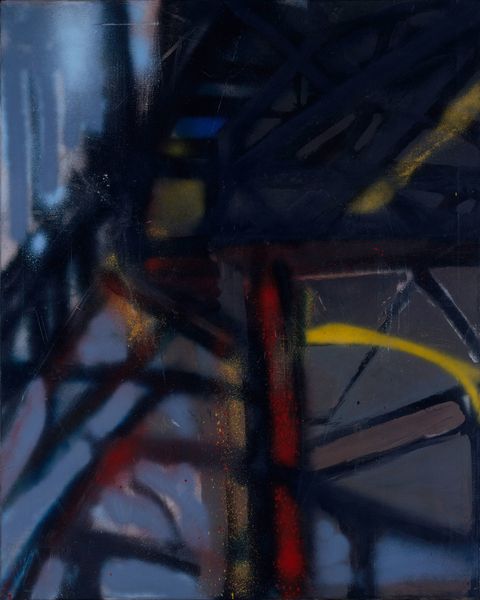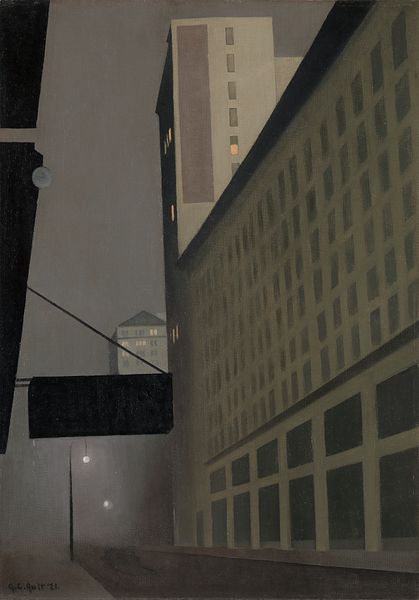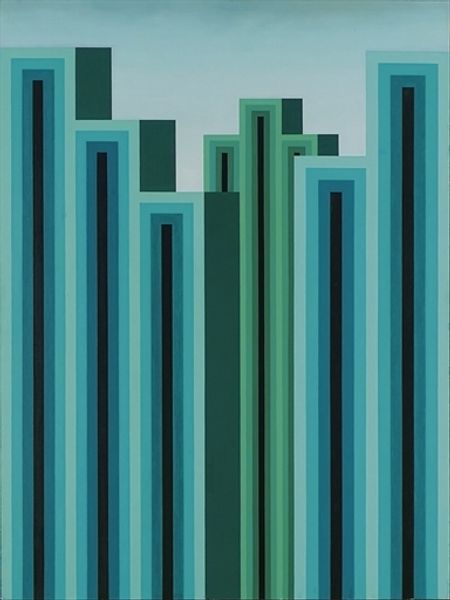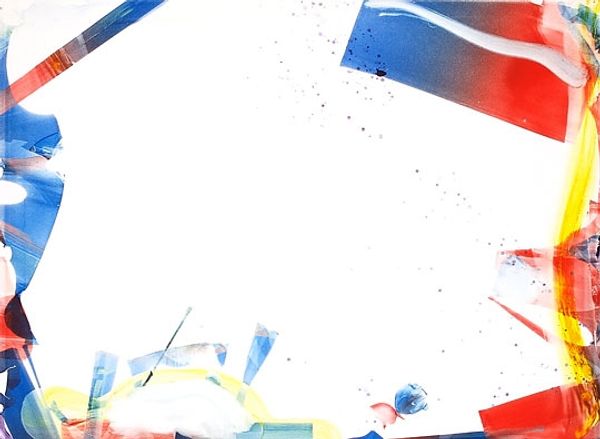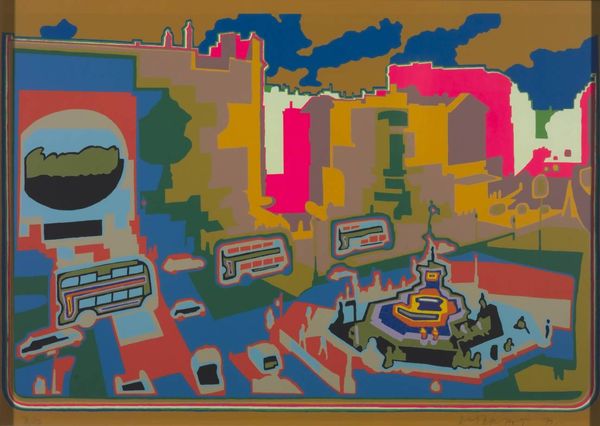
Dimensions: unconfirmed: 590 x 800 mm
Copyright: © Catherine Yass | CC-BY-NC-ND 4.0 DEED, Photo: Tate
Curator: Catherine Yass's "Northwest D2" gives me a sense of being lost in translation. The urban landscape is fractured, as though seen through a distorted lens. Editor: The neon signs and glass facade evoke the hyper-commercialism of late-stage capitalism, don't they? There's a definite tension between the promise of modernity and the alienation it produces. Curator: The symbolic power of neon is fascinating. It's a beacon, but also a mask, concealing the deeper truths of urban existence. Do you think there's a deliberate disruption of space happening here? Editor: Absolutely. I think Yass is critiquing the way urban spaces prioritize commerce over community, especially within cultures undergoing rapid globalization. Curator: I find myself drawn to the interplay of light and shadow. It suggests a hidden world beneath the surface of consumer culture, one that resists easy interpretation. Editor: It is a compelling piece—the photograph invites us to question the narratives we construct about progress, especially as it relates to the built environment. Curator: It certainly gives me a renewed awareness of our surroundings. Editor: And a critical lens to examine them with.
Comments
Join the conversation
Join millions of artists and users on Artera today and experience the ultimate creative platform.
tate 8 months ago
⋮
Invisible City 2001 is a series of six digital prints based on an image from Yass's work of the same title created in 1998. This earlier work comprises four photographic transparencies displayed in light boxes and four short videos. The photographs were taken in Tokyo and depict street scenes taken from the same viewpoint looking 'north', 'north-west', 'north north-west' and 'south'. The digital prints are all component parts of the image subtitled 'north-west' in the original work. Their own subtitles, consisting of the words 'north-west' together with a letter and number reference, such as D6 or D4, suggest map co-ordinates. However these 'co-ordinates' do not follow a logical structure related to the grid they apparently refer to and seem random in their selection and allocation. The digital prints are similar in size to the transparency from which they are derived. Thus scaled-up, these segments of the original represent a greater degree of abstraction. Some, such as Northwest F6, have virtually no recognisable elements and have become compositions in vivid colour. Others, for example Northwest F3, clearly depict a section of a tall modern building illuminated romantically in blue and pink evening light. Light and its manipulated effects are important themes in Yass's work. At an early point in her career she discovered the possibility of reversing the positive and negative aspects of photographic film through an error. She has subsequently experimented and perfected a technique which has become her signature. Each image is produced by taking two photographs, several seconds apart, and then superimposing them. One is positive, the other negative, resulting in the light or white areas of the positive being filled in by the colour produced by the negative. Yass usually uses an intense blue, similar to the 'Chartres blue' of medieval stained glass windows, heightening the atmospheric and sometimes even transcendental effects of her image. In Invisible City the negative image is slightly smaller than the positive image, resulting in white halos around the 'negative' blue areas. The short time gap between photographs and the movement of the traffic in the busy street have contributed to the blur around patches of neon light. The buildings themselves, behind the luminous neons, provide ghostly support structures for the artist's study of city lights. Yass derived the title Invisible City from Italo Calvino's (1923-85) book of the same name (published 1972). The book is a sequences of essays describing fantastical imaginary cities fictionally recounted by Marco Polo (1254-1324) to Kublai Kahn (1215-94). Calvino's preface describes the idealising allure of the imaginary, unknown foreign city which is inevitably destroyed by the corrupting reality of conquest and attendant knowledge. Yass's images coupled with Calvino's title evoke aspects of the city which are present but which go unnoticed. Through the virtuosity of her technical intervention, she has transformed a constantly moving, anonymous and physically alienating modern environment into a space for fantasy, provided by colour and light. The portfolio Invisible City 2001 was printed and proofed at Chromograph in Woverhampton, England and published by Alan Cristea Gallery, London in an edition of forty plus ten artist's proofs. This is number twenty-nine in the edition. The images may be exhibited in any order. Further reading:Catherine Yass: Invisible City, exhibition brochure, Alan Cristea Gallery, London 2001, reproduced (colour) [pp.2-4 and 6-8]Parveen Adams, Greg Hilty, Catherine Yass: Works 1994-2000, London 2000, pp.5-6, 57 and 101 Elizabeth ManchesterMarch 2002
